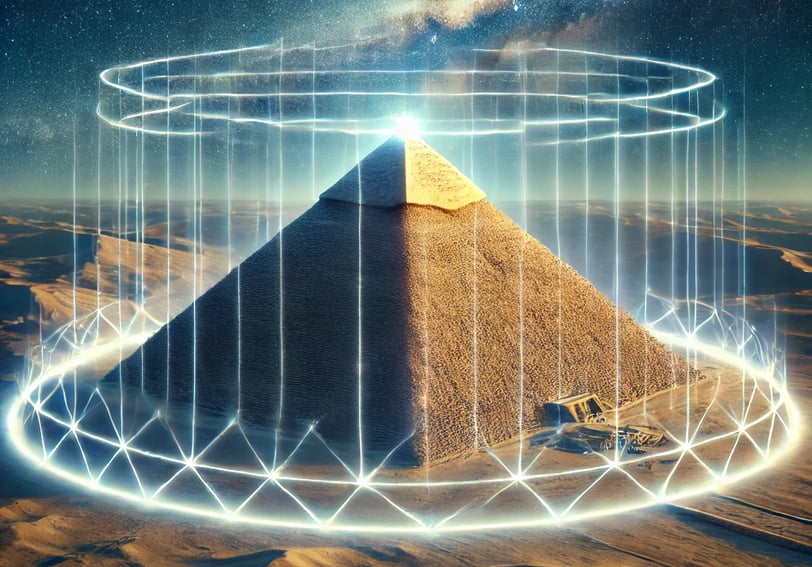The Great Pyramid of Giza and Its Energy Generation Potential
The Great Pyramid of Giza has always fascinated scientists and historians due to its impressive engineering and mysteries that remain unsolved. Recently, a study conducted by Russian and German researchers suggested that this pyramid can concentrate electromagnetic energy in its internal chambers and at its base. This discovery has reignited debates about the true purpose of these structures and their potential technological applications in the modern world.
2/27/20252 min read


The Scientific Study
Researchers from ITMO University in Russia and the Laser Institute of Hannover in Germany used computational models to analyze the pyramid's interaction with electromagnetic waves. They simulated how resonant radio waves interact with the structure and concluded that the pyramid can concentrate electromagnetic energy in specific areas, such as the King's Chamber and the area beneath the pyramid's base.
The research suggests that, under certain conditions, the pyramid can function as a giant resonator, absorbing and redistributing electromagnetic energy. Although this property may have occurred naturally, its study opens new possibilities for the development of technologies inspired by this configuration.
How the Pyramid Concentrates Energy
Scientists discovered that the pyramid can act similarly to a radio antenna. This capability is due to the structure's geometry and the materials used in its construction. According to the research:
Electromagnetic waves interact with the pyramid and propagate in a way that concentrates energy at specific points.
The pyramid exhibits resonant behavior, amplifying certain frequencies of radio waves.
The energy is primarily directed toward the King's Chamber and the lower region of the structure.
Although the ancient Egyptians likely did not construct the pyramid with this intention, this discovery suggests that the pyramidal shape could be useful for modern applications.
Possible Technological Applications
The discovery of the pyramid's electromagnetic properties could have significant implications for modern science. Some examples include:
Nanotechnology: The research may inspire the creation of pyramid-shaped nanoparticles for medical and industrial applications, such as sensors and communication systems.
Renewable Energy: The study could contribute to the development of new energy harvesting and storage technologies.
Telecommunications: The structure of pyramids could serve as a model for improving antenna systems and wireless data transmission.
Challenges and Controversies
Despite the excitement surrounding this discovery, there are challenges and controversies to consider:
Lack of historical evidence: There is no concrete proof that the ancient Egyptians were aware of these energy properties or used them practically.
Study limitations: The research was conducted using theoretical simulations on a scaled-down model of the pyramid, not directly on the Great Pyramid of Giza.
Exaggerated interpretations: Some speculative theories suggest that the pyramid was built as an advanced energy center, but there is no scientific support for this hypothesis.
Conclusion
The discovery that the Great Pyramid of Giza can concentrate electromagnetic energy is fascinating and opens new perspectives for modern science. While there is no evidence that this property was intentionally exploited by the ancient Egyptians, the research results may influence technological innovations ranging from nanotechnology to telecommunications. As further studies are conducted, new insights may reveal even more about the mysteries of this incredible historical structure.
Explore
Discover diverse topics in one convenient hub.
Connect
Learn
contact@mindstormblog.com
© 2025. All rights reserved.

